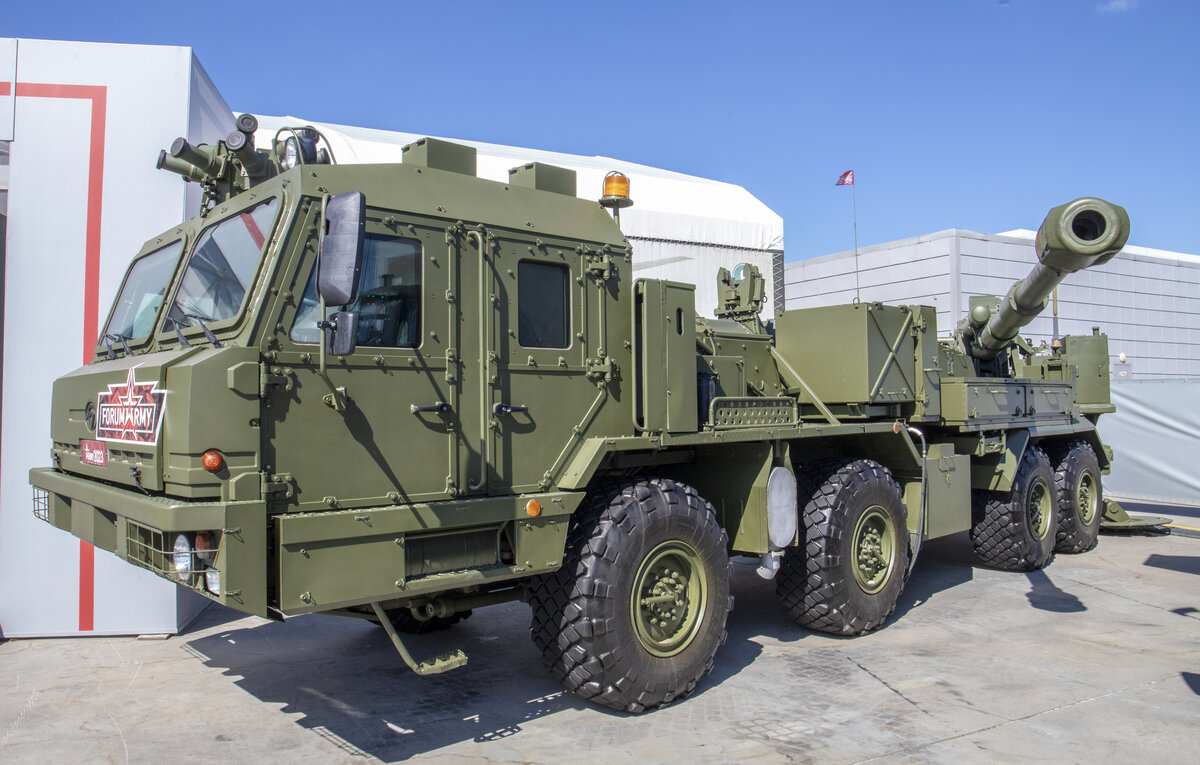
Russia has received a new batch of 2S43 Malva 152mm wheeled self-propelled artillery systems.
This was reported by the press service of the Russian Rostec state corporation.
The number of Malvas in the transferred batch was not disclosed. The Russian Armed Forces received the previous batch of the newest wheeled self-propelled artillery systems in late June 2024.
The Russian army received the first batch of these self-propelled guns in October 2023, and earlier in July 2023, Malva completed a three-year cycle of state tests.

Due to the use of an automobile chassis and a simplified artillery unit design, the production of these systems is easier and more scalable compared to their tracked versions.
In addition, Malva includes a number of off-the-shelf elements already mass-produced by the Russian defense industry. In particular, the self-propelled howitzer is equipped with the 2A64 cannon used in the Msta-S self-propelled howitzers.

In early June 2024, the Malva was first spotted in the Belgorod region during the battle for Kharkiv.
It is known that the development of the self-propelled gun system began at the “Burevestnik” Central Research Institute in the 2010s as part of the Nabrosok research and development project. Testing began in 2020.
The 2S43 is armed with a 152-mm rifled 2A64 gun with a 47-caliber barrel length. It is also used in the design of the Msta-S self-propelled howitzers and its towed version, the Msta-B.
The maximum range of the howitzer with conventional high-explosive ammunition is 24.7 km and about 29 km with rocket-assisted projectiles.

Similar weapons, such as the French Caesar or the Ukrainian Bohdana, are capable of firing at a distance of up to 40 kilometers due to their longer barrels.
The howitzer’s open mounting without additional armor protection or turret made the vehicle lighter. With a 30-round ammunition capacity, it weighs 32 tons. This is a quarter lighter than the Msta-S tracked vehicle.
The self-propelled artillery system is built on the chassis of the BAZ-6010-027 truck, which reduces the cost and speeds up its production.
The experience of using the 2S43 has revealed a low level of automation. The vehicle has a primitive fire control system and requires manual feeding of ammunition to fire.
According to the Russian military, the vehicle has significantly limited horizontal guidance angles. It also requires flat ground at the firing position because the platform cannot be leveled independently.
Підтримати нас можна через:
Приват: 5169 3351 0164 7408
PayPal - paypal@mil.in.ua
Стати нашим патроном за лінком ⬇
Subscribe to our newsletter
or on ours Telegram
Thank you!!
You are subscribed to our newsletter